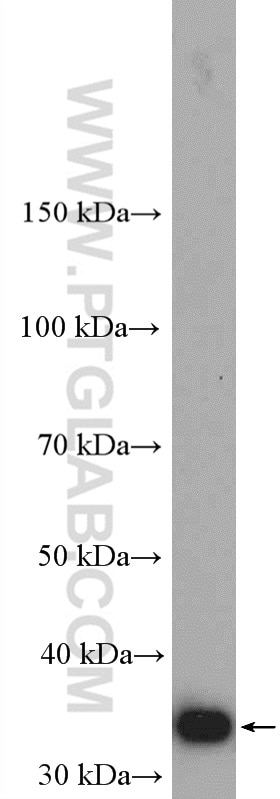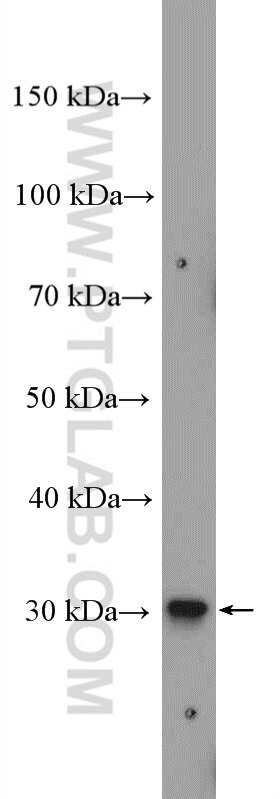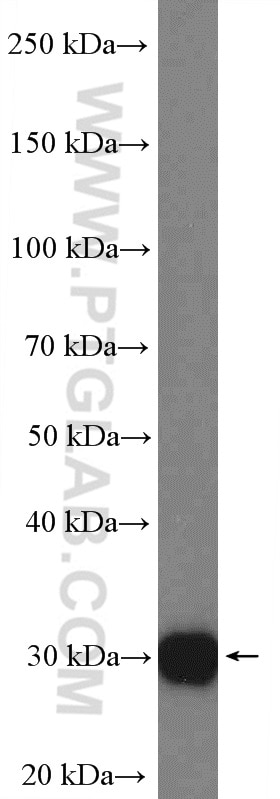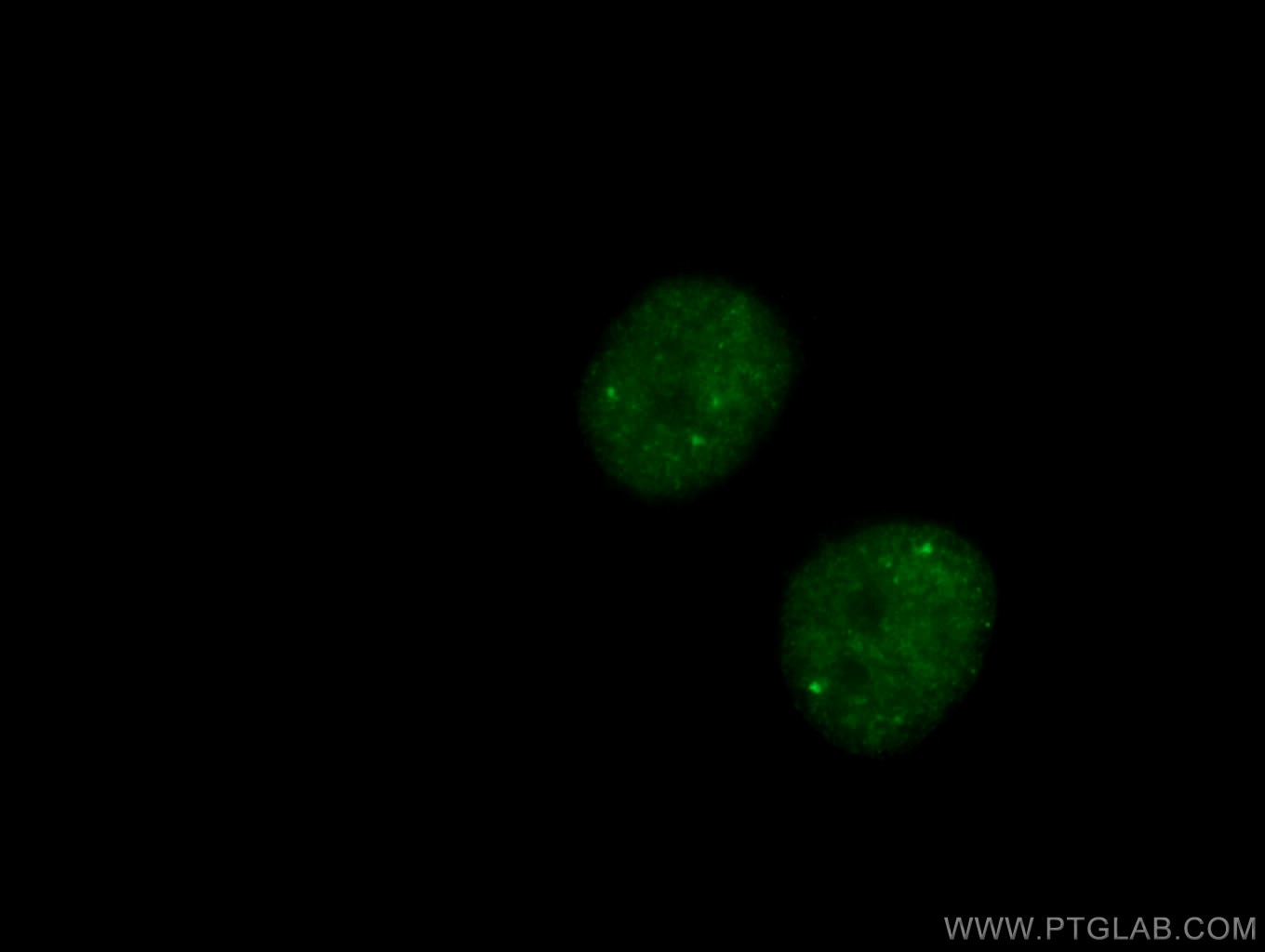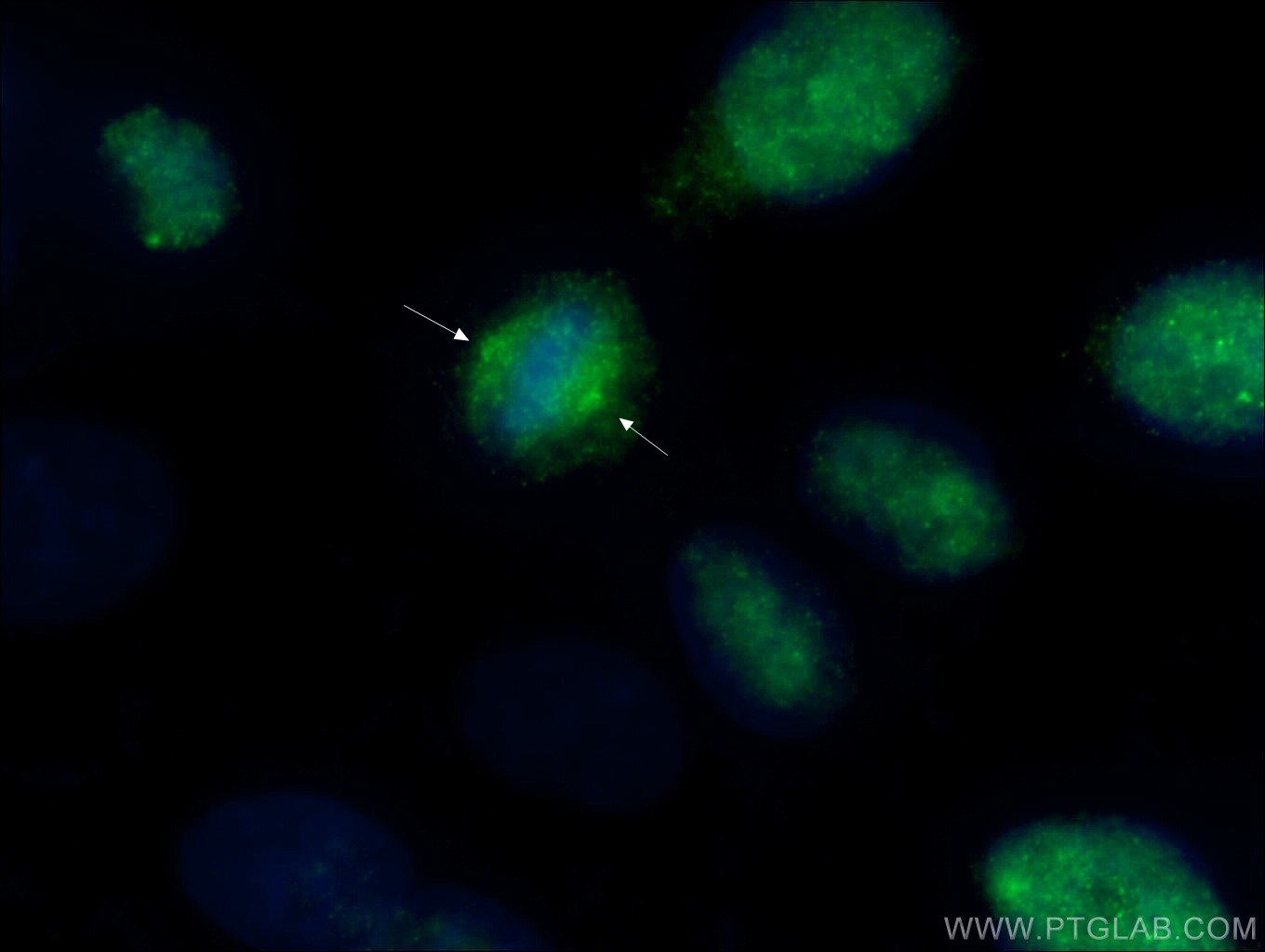CCDC124 Polyklonaler Antikörper
CCDC124 Polyklonal Antikörper für WB, IF/ICC, ELISA
Wirt / Isotyp
Kaninchen / IgG
Getestete Reaktivität
human, Maus
Anwendung
WB, IF/ICC, ELISA
Konjugation
Unkonjugiert
Kat-Nr. : 27106-1-AP
Synonyme
Geprüfte Anwendungen
| Erfolgreiche Detektion in WB | Maushirngewebe, humanes Plazenta-Gewebe, Mauslebergewebe |
| Erfolgreiche Detektion in IF/ICC | HeLa-Zellen |
Empfohlene Verdünnung
| Anwendung | Verdünnung |
|---|---|
| Western Blot (WB) | WB : 1:1000-1:4000 |
| Immunfluoreszenz (IF)/ICC | IF/ICC : 1:50-1:500 |
| It is recommended that this reagent should be titrated in each testing system to obtain optimal results. | |
| Sample-dependent, check data in validation data gallery | |
Veröffentlichte Anwendungen
| WB | See 1 publications below |
| IF | See 1 publications below |
Produktinformation
27106-1-AP bindet in WB, IF/ICC, ELISA CCDC124 und zeigt Reaktivität mit human, Maus
| Getestete Reaktivität | human, Maus |
| In Publikationen genannte Reaktivität | human |
| Wirt / Isotyp | Kaninchen / IgG |
| Klonalität | Polyklonal |
| Typ | Antikörper |
| Immunogen | CCDC124 fusion protein Ag25930 |
| Vollständiger Name | coiled-coil domain containing 124 |
| Beobachtetes Molekulargewicht | 30-32 kDa |
| GenBank-Zugangsnummer | BC013949 |
| Gene symbol | CCDC124 |
| Gene ID (NCBI) | 115098 |
| Konjugation | Unkonjugiert |
| Form | Liquid |
| Reinigungsmethode | Antigen-Affinitätsreinigung |
| Lagerungspuffer | PBS with 0.02% sodium azide and 50% glycerol |
| Lagerungsbedingungen | Bei -20°C lagern. Nach dem Versand ein Jahr lang stabil Aliquotieren ist bei -20oC Lagerung nicht notwendig. 20ul Größen enthalten 0,1% BSA. |
Hintergrundinformationen
CCDC124 is a novel centrosomal and midbody protein that is highly conserved among species. It is ubiquitously expressed with high expression in brain, placenta, liver, spleen, and prostate. At telophase, CCDC124 dissociates from centrosomes and relocalizes to the midzone, subsequently accumulating at the midbody at cytokinesis. It interacts with the Ras-guanine nucleotide exchange factor 1B (RasGEF1B) and is involved in cytokinesis.
Protokolle
| PRODUKTSPEZIFISCHE PROTOKOLLE | |
|---|---|
| WB protocol for CCDC124 antibody 27106-1-AP | Protokoll herunterladen |
| IF protocol for CCDC124 antibody 27106-1-AP | Protokoll herunterladen |
| STANDARD-PROTOKOLLE | |
|---|---|
| Klicken Sie hier, um unsere Standardprotokolle anzuzeigen |
